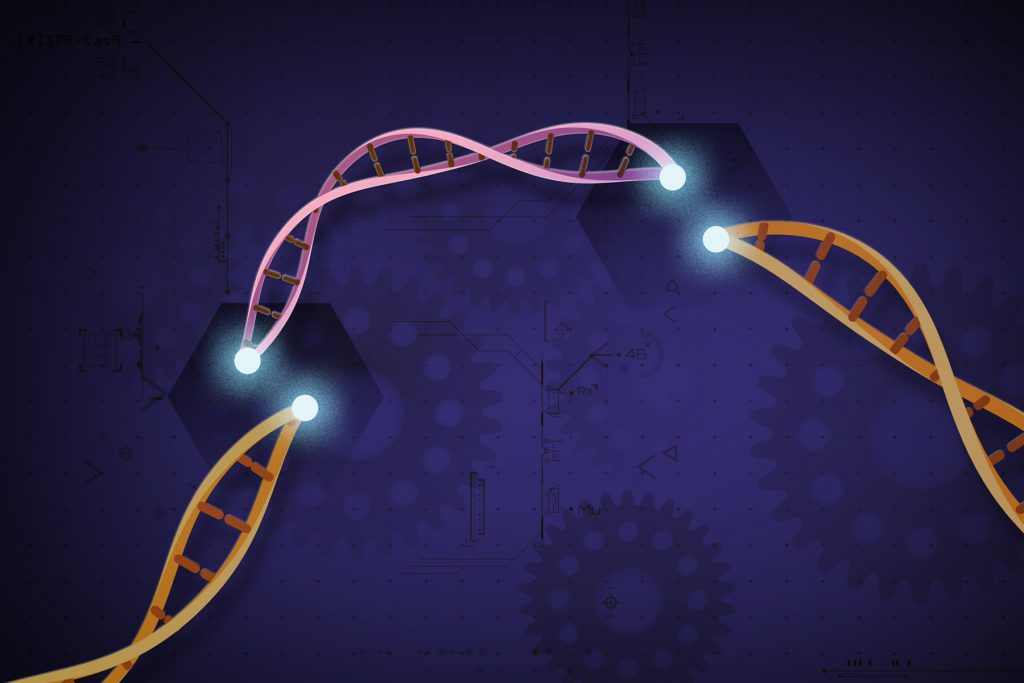A common nuisance for bacteria is the bacteriophage: a virus that uses the internal machinery of a bacteria to replicate its own genetic material. Bacteriophages do this by latching onto bacteria and injecting their DNA into the cell. As the cell grows and divides, the bacteriophage’s hope is that their genetic material is replicated alongside the bacteria’s own genome. Unfortunately for bacteriophages, many bacteria have evolved a method to fight off their attacks. After recognizing a viral infection, the bacteria integrate portions of the injected viral DNA into their own genome. The area where these viral DNA segments end up is known as the CRISPR sequence (short for clustered regularly interspaced short palindromic repeat). The viral DNA segments that were integrated into the CRISPR sequence are then replicated and attached to a bacterial protein called Cas9 (CRISPR-associated protein 9). These CRISPR-Cas9 pairs patrol the cell, acting as the bacteria’s antiviral immune system. If the same viral infection happens again, the DNA in one of the CRISP-Cas9 pairs will match part of the injected viral DNA and bind to it. Once bound, Cas9 cuts the viral DNA, which is then destroyed.

Recently, scientists have found a way to harness this system for manipulating genes (a process broadly called genetic engineering). By making an artificial CRISPR sequence, attaching that sequence to Cas9, then introducing the man-made CRISPR-Cas9 into a cell, it becomes possible to make a targeted cut in any gene. Making a CRISPR-Cas9 pair that targets one specific gene is as simple as making a CRISPR sequence that matches that gene.
Unlike in bacteria, most organisms repair rather than simply destroy cut DNA. This leaves the targeted genetic sequence available for further manipulation, including the introduction of a short mutation or even the insertion of a whole new DNA sequence. In essence, using the CRISPR-Cas9 system, scientists are now able to edit genes in a simple, targeted way.
CRISPR-Cas9 has become quite popular as a genetic tool in research settings: as of now, the genomes of anything from worms and fruit flies to mice and monkeys have been altered using this technique. While its use in humans is still in its early stages – the first patient treated using CRISPR began therapy earlier this year – is plausible that CRISPR-Cas9 could prove useful in altering the genomes of patients with genetic disorders (like, for instance, the SCAs). For patients, this might sound like a miracle cure. However, it is important to note that several concerns remain as to the ethics of human genetic engineering – the concept of “designer babies” being one of them.
If you’re interested in reading more about the conversation around CRISPR and bioethics, check out the articles by NPR and the National Human Genome Research Institute.
Snapshot written by Logan Morrison and edited by Dr. Maxime W. Rousseaux.










